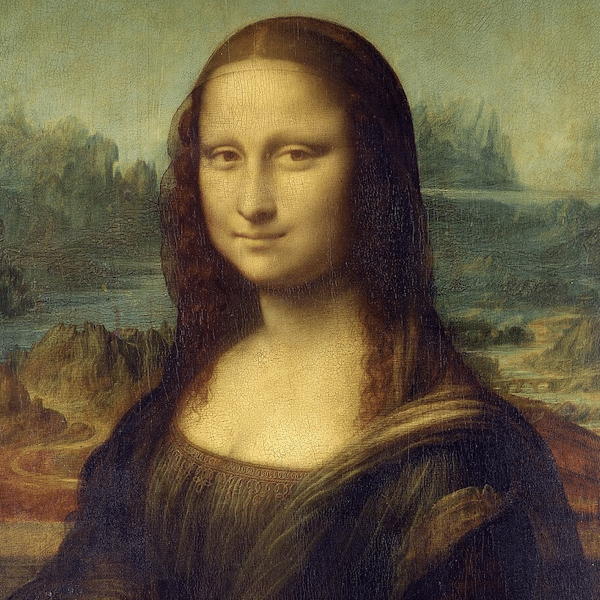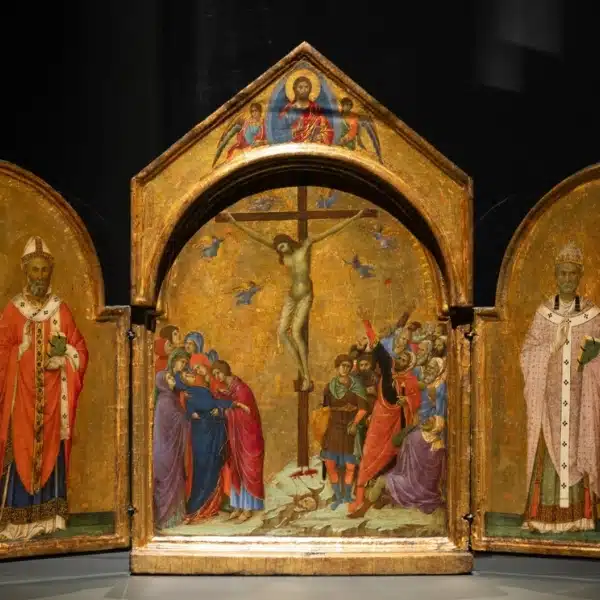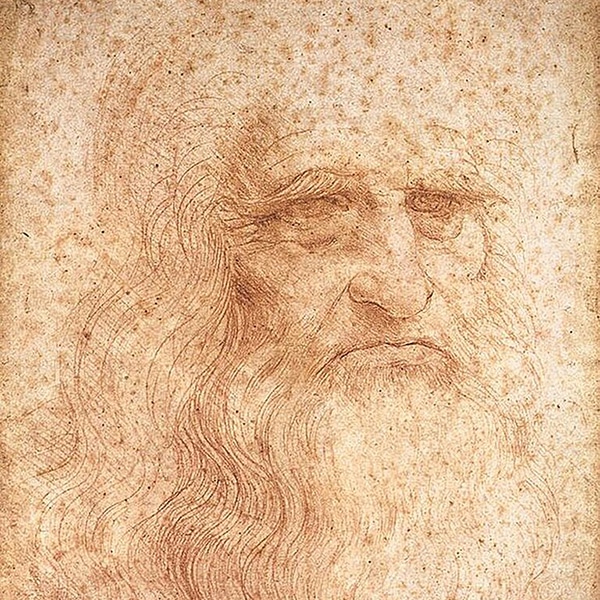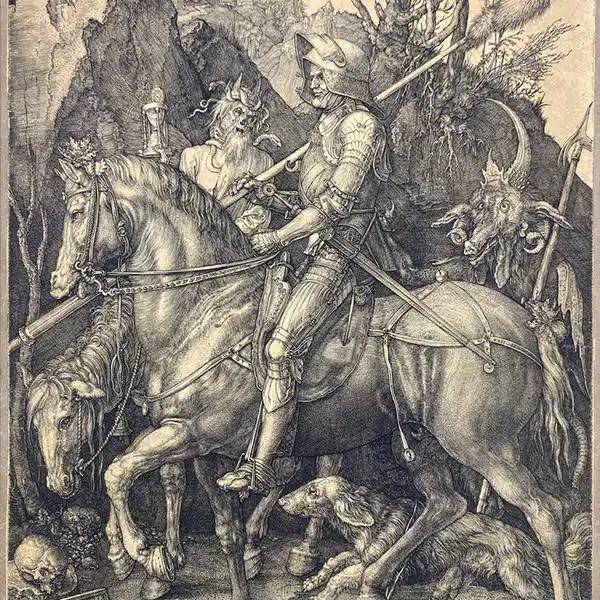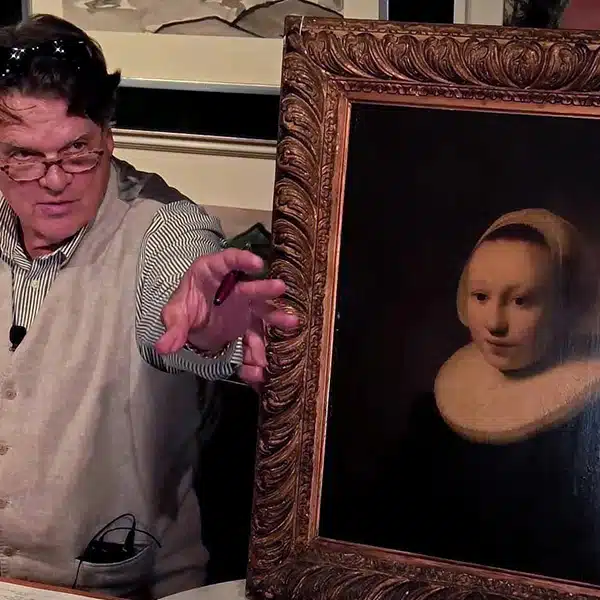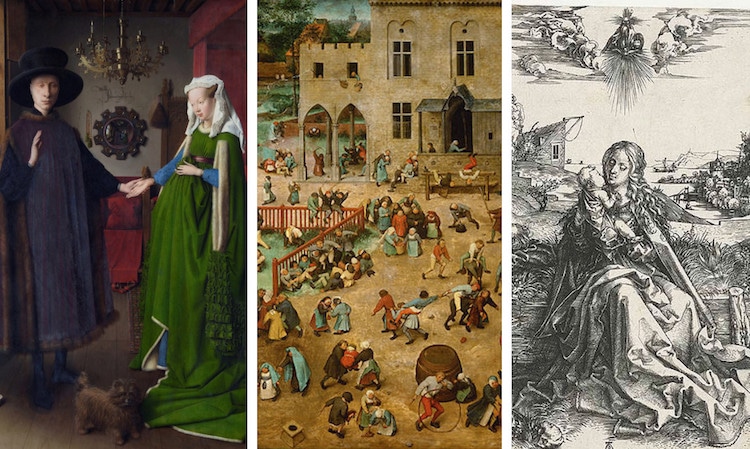
In the 15th century, artistic tastes throughout Europe started to shift. This change resulted in a period known as the Renaissance, a 300-year “golden age” of enlightenment. To many people, this piece of European art history is often only associated with masters of the Italian Renaissance, like Michelangelo, Leonardo da Vinci, and Sandro Botticelli. However, this transformation touched many countries across the continent, culminating in a separate but simultaneous movement known as the Northern Renaissance.
Like their Italian counterparts, Northern Renaissance artists rejected recent Medieval ideas and instead found inspiration in the age-old aesthetic of Classical antiquity. This approach culminated in an artistic revival that helped bring Europe out of its Dark Ages.
Here, we look at the lesser-known Northern Renaissance, exploring its history and presenting its achievements.
What is the Northern Renaissance?
The Northern Renaissance is a period in which artists north of the Alps—namely, in the Low Countries (the Netherlands and Belgium), Germany, France, and England— adopted and adapted the ideas of the Italian Renaissance. It is characterized by a realistic approach to painting, improved techniques, and the proliferation of printmaking.
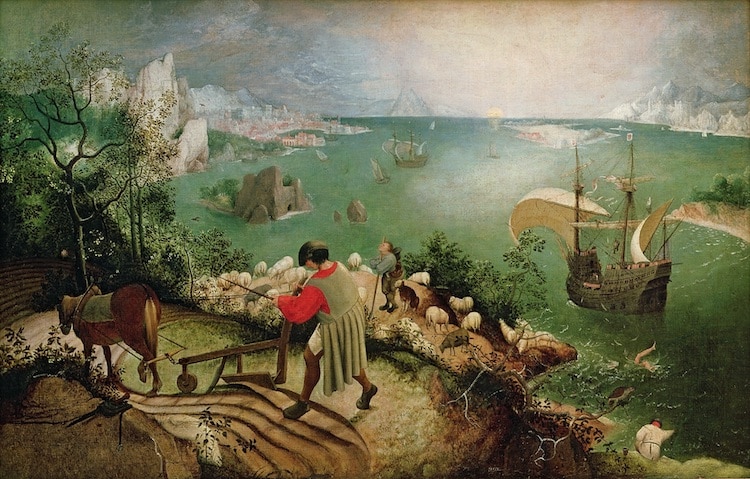
Pieter Bruegel the Elder, ‘The Fall of Icarus' (1558) (Photo via Wikimedia Commons)
History
By the beginning of the 15th century, Europe's Dark Ages (approximately 500-1000 AD) were coming to an end. During this time, art in Europe was usually religious and, though often rendered in expressive detail, displayed little interest in perspective and human realism. However, around the year 1400, Italian artists began to emulate Classical sculpture in their work.
Thanks to the invention of the printing press 50 years later, these ideas would spread across the continent, inspiring northern artists to embrace a like-minded approach to artistic representation. Albrecht Dürer, a German painter and printmaker who knew many Italian Renaissance artists personally, embodied this ideal, famously noting that “the new art must be based upon science.”
Achievements
While the Italian Renaissance is known for its advancements in color, understanding of anatomy, and renewed interest in secular subject matter, the northern movement is celebrated for realistic altarpieces and portraits, exquisite brushwork, and popularization of prints.
Realism
Unlike Italian artists who shifted away from religious iconography, many northern artists continued to produce altarpieces throughout the Renaissance. Unlike previous church commissions that featured flat perspective, stylized figures, and ethereal backdrops, however, these new works showcased an interest in-depth, realistic people, and everyday settings.
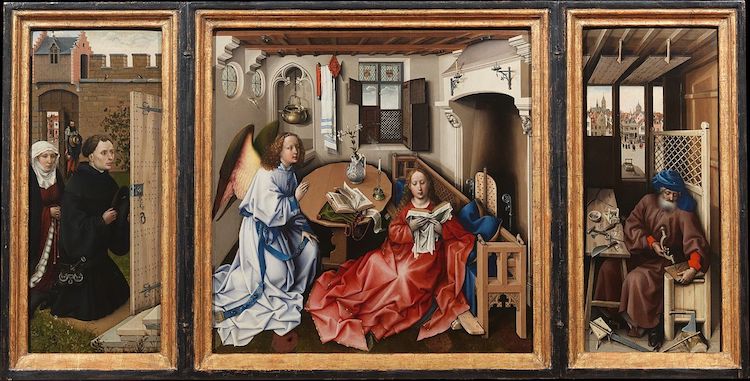
Robert Campin, ‘The Mérode Altarpiece' (undated) (Photo: Metropolitan Museum of Art via Wikimedia Commons)
This fixation on daily life is also present in the genre paintings of Pieter Bruegel the Elder, a Dutch artist whose depictions of peasants capture the period's appreciation for earthly, everyday subject matter.
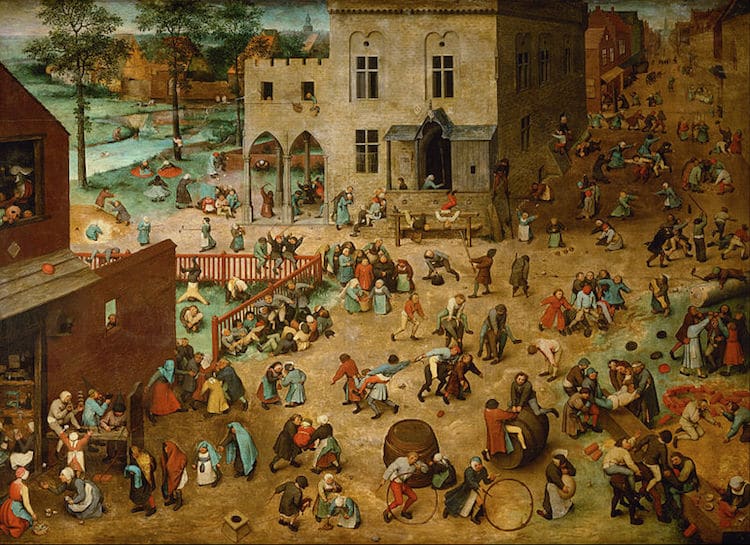
Pieter Bruegel the Elder, ‘Children's Games' (1560) (Photo: Google Art Project via Wikimedia Commons)
Additionally, Northern Renaissance artists also applied this newfound appreciation for realism to portraiture, as evident in Jan van Eyck's well-known piece, The Arnolfini Portrait. In addition to its secular subjects, this painting is celebrated for its dimensionality, tonal achievement, and meticulous detail—which each adds an aspect of realism to the scene.
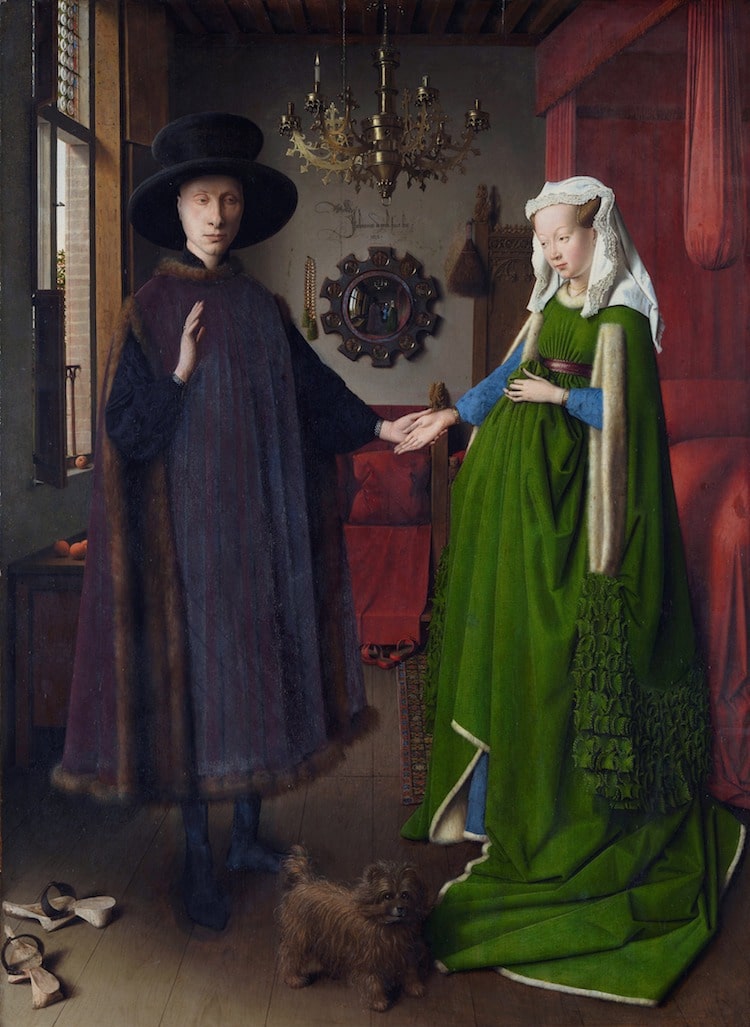
Van Eyck,'The Arnolfini Portrait' (1434) (Photo: National Gallery UK via Wikimedia Commons)
Oil Painting Techniques
With Van Eyck at the forefront, northern artists also began to experiment with new methods of painting. During the Middle Ages, most artists used tempera paint, a medium made of egg yolk mixed with pigment. This type of paint was not ideal for Renaissance artists, however, as its quick-drying nature did not allow them to achieve a great deal of tone, texture, or detail. Thus, they turned to oil paint, which enabled them to beautifully blend layers of paint and mix colors on the canvas,.
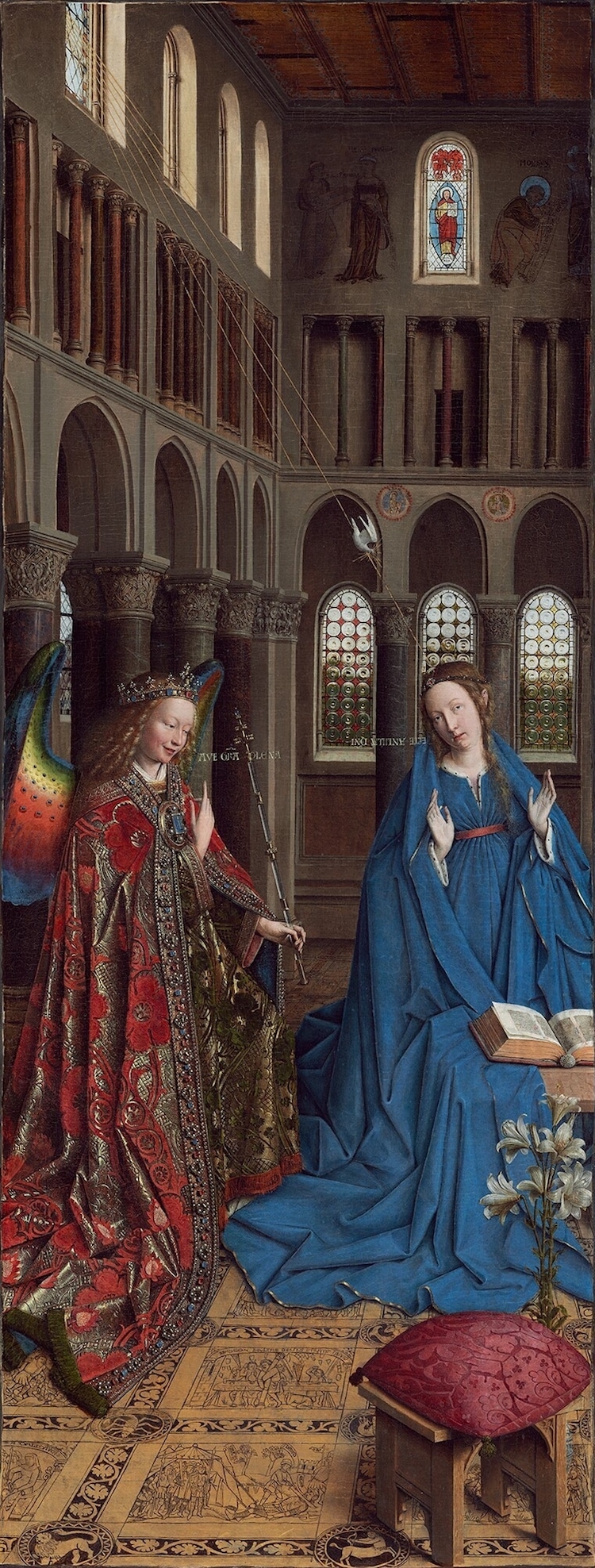
Jan Van Eyck,' ‘The Annunciation' (c. 1434-1436) (Photo via Wikimedia Commons)
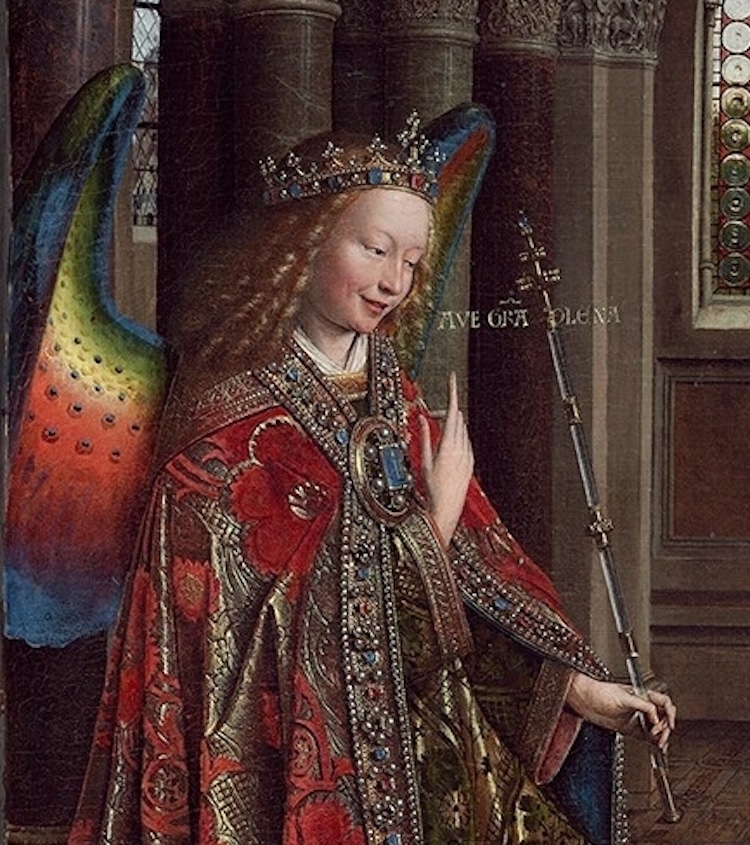
‘The Annunciation' (Detail)
Printmaking
In addition to painting, northern artists also experimented with another artistic practice: printmaking. While Germany and France produced playing cards using a hand-colored woodcut technique in the early 15th century, printmaking gained popularity decades later with Albrecht Dürer‘s engravings.
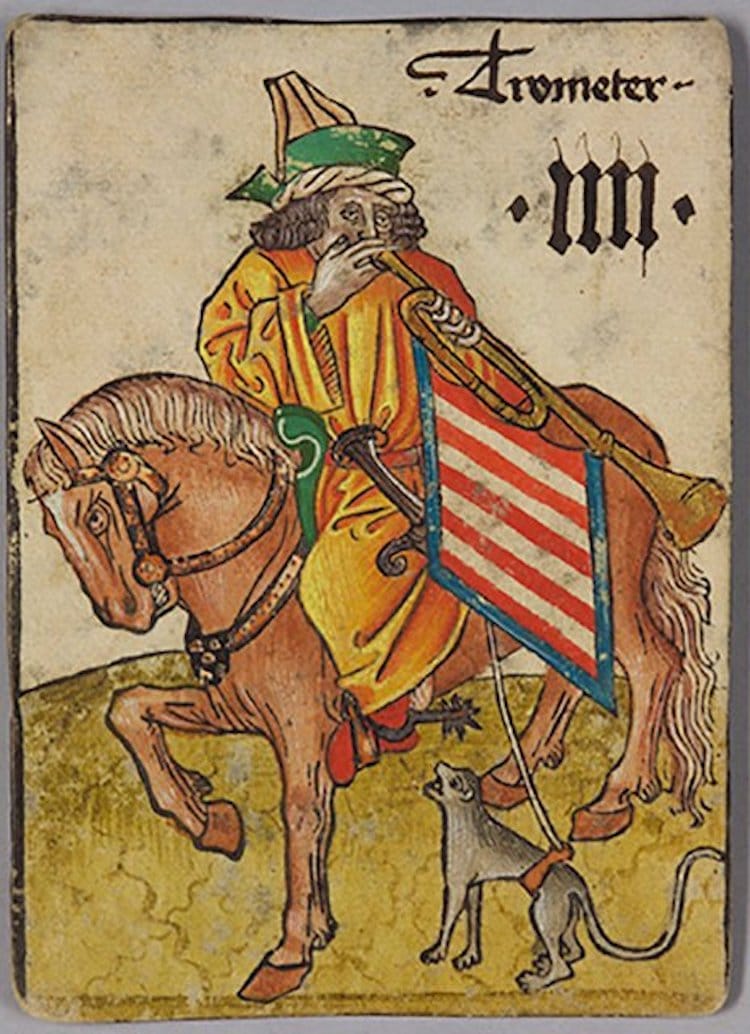
‘Trumpeter of Hungary, Courtly Household Cards' (1450) (Photo: Kunsthistorisches Museum Wien, Kunstkammer via Wikimedia Commons)
Like paintings of the period, his collection of prints feature a mix of both religious depictions and secular subjects rendered in realistic detail. However, he also incorporated mythological iconography, likely inspired by his interactions with his Italian peers.
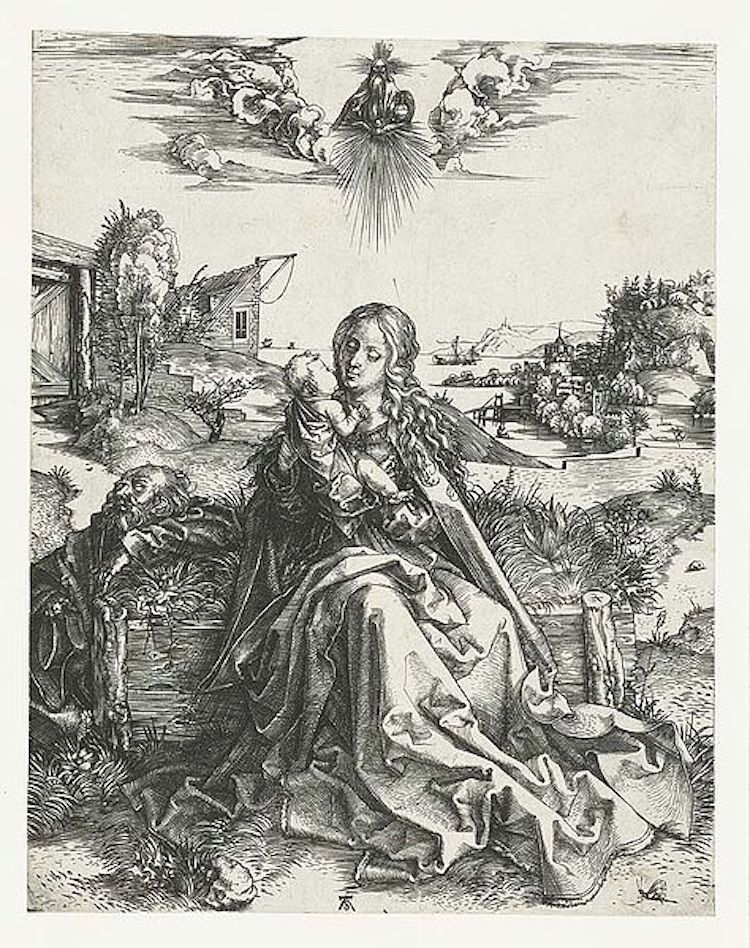
Albrecht Dürer, ‘The Virgin with the Dragonfly' (1495) (Photo: The Rijks Museum via Wikimedia Commons)
Legacy
Though it ended around 1700, the Northern Renaissance played a significant role in succeeding art movements—both in Europe and beyond. In modern art, its influence is evident in the prominence of printmaking, while contemporary artists‘ penchant for realism can be traced back to the paintings of Van Eyck. Thus, while not as widely known as the Italian Renaissance, the movement has been just as influential and inspiring.
Related Articles:
The Evolution of Landscape Painting and How Contemporary Artists Keep It Alive
15 Facts You Need to Know About the Delightfully Weird ‘Garden of Earthly Delights’
20+ Art History Accessories That Turn Everyday Objects into Masterpieces












































































